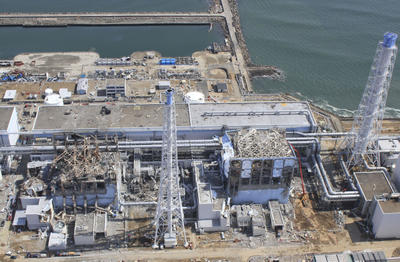That is what Kan tried to do. During the crisis, he announced plans for a bottom-up review of Japan’s nuclear-centred Basic Energy Plan. Constructed by the Ministry of Economy, Trade and Industry (METI) with considerable input from TEPCO and the other private power utilities, this plan called for the construction of fourteen additional nuclear power plants by 2030. Kan’s announcement was unequivocal and well received: Japan must ‘start from scratch’ on a new national energy policy.
But Kan was no Koizumi. His move was undercut first when Kaoru Yosano, his own minister for economic and fiscal policy (and a former Japan Atomic Power Company employee) opposed it. It was weakened further when he — typically, many say — failed to coordinate his nuclear policy pronouncements with Banri Kaieda, his minister of economy and industry, who promised to resign over the gaffe. And the Rengo trade union federation, the main support base of the DPJ, supports nuclear power. In American parlance, Kan talked the talk but tripped over himself when he tried to walk the walk.
Still, the idea of a wholesale re-examination of Japan’s energy policy — including shutting down nuclear reactors in precarious locations, moving the regulatory National Industrial Safety Agency out of its home within METI (which is tasked in part with promoting nuclear power), separating generation from transmission, and eliminating the highly controversial fast breeder reactor program — has been welcomed by editorialists and by public opinion as a whole. So was businessman Son Masayoshi’s initiative to work with governors and mayors to build renewable power plants across the nation. The best that nuclear power advocates in the DPJ can do now is reassure investors that Japan’s nuclear plants will be phased out slowly, as they reach the end of their 40-year life cycle and as Japan transitions to alternative power sources.
Even if the changes in Japan’s energy policies are less sweeping than those Prime Minister Kan proposed, it will be difficult for his successors, new Prime Minister Noda included, to return to the energy policy status quo ante. Energy policy, and nuclear power in particular, will be an important electoral issue in Japan for a long time to come.
Richard Samuels is the Ford International Professor of Political Science and Director of the Center for International Studies at the Massachusetts Institute of Technology. This essay is adapted from an interview with Chris Acheson at the US National Bureau of Asian Research.

